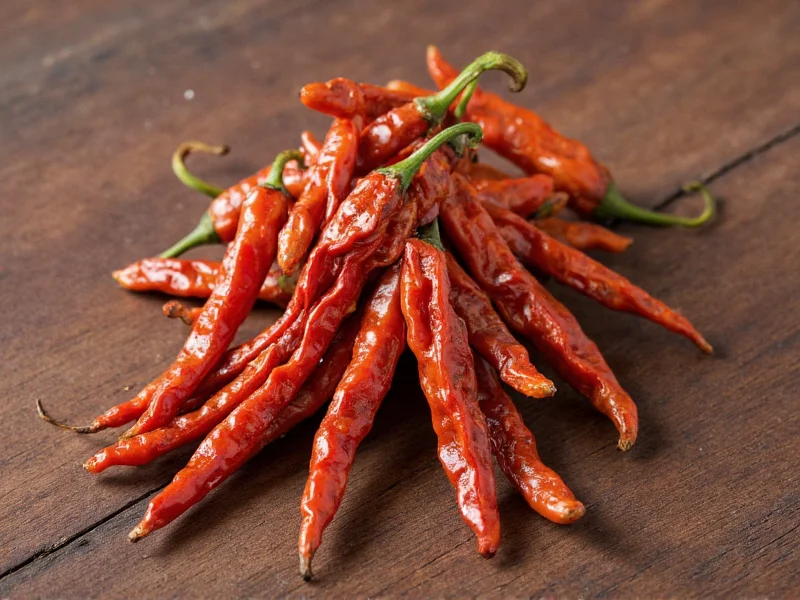Understanding the Chipotle-Jalapeño Relationship
Many home cooks and food enthusiasts wonder about the connection between chipotle peppers and jalapeños. The straightforward answer is that chipotles aren't a separate pepper variety but rather jalapeños that have been through a specific preservation method. When red jalapeño peppers (which are jalapeños left to fully ripen on the plant) are smoke-dried, they become what we know as chipotle peppers.
The Transformation Process: From Jalapeño to Chipotle
The journey from fresh jalapeño to chipotle involves several critical steps:
- Ripening: Jalapeños are allowed to mature fully on the plant until they turn from green to deep red
- Harvesting: Fully ripened red jalapeños are carefully selected
- Smoking: Peppers are exposed to low-temperature smoke for several days
- Drying: Moisture content reduces from approximately 90% to around 10-15%
This traditional preservation method originated with indigenous peoples in Mesoamerica long before European contact. The smoking process not only extends the pepper's shelf life but fundamentally transforms its flavor profile, creating the distinctive smoky, earthy taste that defines chipotles.
| Characteristic | Raw Jalapeño | Chipotle Pepper |
|---|---|---|
| Origin | Green or red jalapeño pepper | Smoke-dried red jalapeño |
| Moisture Content | Approximately 90% | 10-15% after drying |
| Flavor Profile | Grassy, bright, vegetal with moderate heat | Smoky, earthy, complex with deeper heat |
| Shelf Life | 1-2 weeks refrigerated | Several months to years when properly stored |
| Common Forms | Fresh, pickled, canned | Dried whole, powdered, in adobo sauce |
Flavor Differences You Should Know
While they share the same botanical origin, the flavor transformation is significant. Fresh jalapeños offer a bright, grassy flavor with moderate heat (2,500-8,000 Scoville units). Chipotles develop a complex smoky-sweet profile with deeper, more rounded heat (2,500-10,000 Scoville units) due to the smoking process.
The smoking process creates new flavor compounds through the Maillard reaction and introduces phenolic compounds from the wood smoke. This explains why chipotles have that distinctive campfire-like quality that fresh jalapeños lack. Understanding this difference between chipotle and jalapeno is crucial for proper recipe execution.
Culinary Applications and Substitutions
Knowing whether a chipotle pepper is a dried jalapeno helps determine appropriate substitutions in recipes:
When to Use Fresh Jalapeños
- Salsas and fresh relishes
- Guacamole and fresh dips
- Stuffed peppers
- Raw garnishes
- Quick-pickled preparations
When to Use Chipotle Peppers
- Moles and complex sauces
- Barbecue rubs and marinades
- Bean dishes and stews
- Adobo preparations
- Recipes specifically calling for smoky depth
Common Misconceptions Clarified
Several myths persist about chipotle peppers:
Myth: Chipotles are a different species of pepper
Fact: They are exclusively smoke-dried jalapeños. No other pepper variety becomes a chipotle.
Myth: All dried jalapeños are chipotles
Fact: Only smoke-dried jalapeños qualify as chipotles. Sun-dried jalapeños are called chiles ahumados but lack the distinctive smokiness.
Myth: Chipotle powder is just dried jalapeño powder
Fact: Authentic chipotle powder must come from smoke-dried peppers. Regular jalapeño powder lacks the characteristic smokiness that defines chipotle pepper vs fresh jalapeno products.
Working with Chipotle Peppers in Your Kitchen
If you're wondering can I substitute chipotle for jalapeno in your recipes, consider these practical tips:
- Rehydrating dried chipotles: Soak in hot water for 20-30 minutes before use
- Chipotles in adobo sauce: The most accessible form for home cooks; rinse before use to control vinegar flavor
- Substitution ratios: 1 fresh jalapeño ≈ ½-1 chipotle pepper (adjust for heat preference)
- Storage: Keep dried chipotles in airtight containers away from light and moisture
When exploring what is chipotle made from, remember that authentic chipotle flavor comes specifically from the smoking process, not just drying. This knowledge helps you make informed decisions when selecting ingredients for recipes requiring that distinctive smoky heat.
Final Thoughts on Pepper Identification
Understanding that is a chipotle pepper a dried jalapeno (specifically a smoke-dried one) helps demystify many recipe instructions. While they share botanical origins, their culinary applications differ significantly due to the transformation that occurs during smoking. Whether you're working with fresh jalapeños for their bright heat or chipotles for their smoky depth, recognizing this relationship enhances your cooking precision and flavor development.
Frequently Asked Questions
Are chipotle peppers just dried jalapeños?
Chipotle peppers are specifically smoke-dried jalapeños, not merely air-dried. The smoking process is essential to developing the characteristic flavor that distinguishes chipotles from other dried jalapeño preparations.
Can I make chipotle peppers at home?
Yes, but it requires specific equipment. You'll need fully ripened red jalapeños and a smoker. The peppers must be smoked at 120-150°F for 8-12 hours until they're leathery but not brittle. Simply drying jalapeños without smoke won't create authentic chipotles.
What's the difference between chipotle powder and jalapeño powder?
Chipotle powder comes from smoke-dried jalapeños and has a distinctive smoky flavor, while jalapeño powder is made from air-dried peppers and lacks the smokiness. This explains the significant flavor difference between these two products despite sharing the same base ingredient.
Why are chipotles usually found in adobo sauce?
Adobo sauce (typically containing vinegar, garlic, oregano, and other spices) preserves the rehydrated chipotles while enhancing their flavor. The sauce helps maintain moisture and provides a balanced flavor profile that complements the smokiness of the peppers.
How spicy are chipotle peppers compared to fresh jalapeños?
Chipotles generally range from 2,500-10,000 Scoville units, while fresh jalapeños range from 2,500-8,000. The heat can feel more intense in chipotles because the drying process concentrates capsaicin, though individual pepper heat varies based on growing conditions.











 浙公网安备
33010002000092号
浙公网安备
33010002000092号 浙B2-20120091-4
浙B2-20120091-4